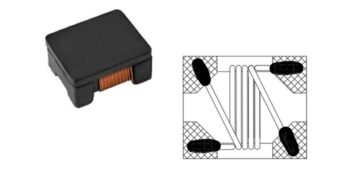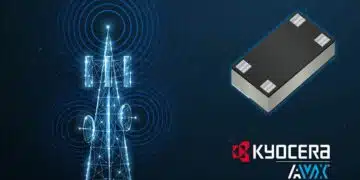Dr. Alexander Teverovsky from Goddar Space Flight Center agreed to answer some EPCI questions on the evaluation of passive components for space application and NASA projects.
I know Alexander for more than fifteen years from CARTS and CMSE conferences, where we had an opportunity to discuss some failure modes of tantalum capacitors. He is one of the few experts from passive component industry with deep knowledge of physical mechanisms and processes that enable him to identify the real root causes of component failures on fundamental level. It is my pleasure to introduce a brief interview with him on the EPCI website. T.Zednicek, EPCI president
>Q1 EPCI: Hello Alexander, can you please briefly introduce your position and your expertise with (passive) component technology used in space?
A.Teverovsky:
I have been working for Goddard Space Flight Center Parts Engineering branch for more than 20 years, first as a component failure analyst, and for the last 15 years as a researcher evaluating new technology components, mostly passives, for space applications.
>Q2 EPCI: What have been your recent and current passive components evaluation projects?
A.Teverovsky:
For the last few years I was involved in several NASA Electronic Parts and Packaging (NEPP) projects analyzing different types of tantalum and ceramic capacitors. Current projects include evaluation of advanced wet and polymer tantalum capacitors, and analysis of various reliability issues with base metal electrode (BME) capacitors that in the near future might replace currently used precious metal electrode (PME) parts. One of the purposes of these tasks is development of adequate requirements for screening and qualifications processes that would assure high quality and reliability of components for space applications.
Due to the specifics of integration and testing process of space systems, their assembly often requires rework and manual soldering that is a known way to introduce cracks in MLCCs. Several task were dedicated to the cracking problems in an attempt to understand better their origin, investigate degradation and failures in capacitors with cracks under different environmental stresses, and find possible ways to select the most robust capacitors for our systems.
>Q3 EPCI: What do you see as the weak points of reliability prediction models for passive components?
A.Teverovsky:
Historically, infant mortality (IM) failures was a prevailing problem for solid chip tantalum capacitors. This resulted in development of so-called Weibull Grading Test (WGT) that is currently used as a major screening technique for hi-rel chip tantalum capacitors. IM failure rate is decreasing with time, so by monitoring failures at accelerated conditions, one can stop testing when the necessary level of the failure rate is achieved.
This situation is changing now, especially for polymer capacitors, for which wear-out failures might be prevailing. A similar situation is happening with MLCCs, where parametric wear-out failures in BME capacitors are more likely that IM or random failures that were typical for PMEs. Components with prevailing wear-out failures require different methods for reliability modeling. Likely, the physics of failure approach works well in the wear-out region and allows for adequate failure modeling and simulation. More data to assess voltage and temperature acceleration factors are necessary for reliability prediction and justified derating. I hope manufacturers and academia will address these issues in the near future.
>Q4 EPCI: What are the trends in evaluation of commercial components for space applications, do you expect the MIL standards/ COTS+ will remain relevant for future space component procurement or there will be some new up-screening methods – especially in the case of private space companies with their own evaluation and testing procedures?
A.Teverovsky:
Efforts to maintain and update MIL standards and verify adequate manufacturing conditions by auditing continue, and MIL-spec components will remain the components of choice for many hi-rel and space systems for the foreseeable future. However, the use of COTS+ components is also increasing, especially for level 3 and below missions or miniaturized satellites (e.g. CubeSat). Due to the “explosion” of wireless technology, most new RF components are available as commercial products only. The driving force for this process is not the cost, but a much better performance of commercial products.
- There are several hurdles for COTS+ introduction into hi-rel systems.
Possible variations of materials and design from lot to lot and fast rate of materials/processes improvements. In this situation we cannot be sure that qualification tests that have been completed for one lot are applicable to another. - Burning-in, which is considered a major screening technique, is often insufficient, or even not carried out at all. Although burning-in is not always an effective screen, it might be easier to use it than prove it is worthless.
- Most commercial products have lead-free terminations, which due to the risk of whiskering is prohibited for space applications.
- COTS+ are often new technology components that do not have sufficient long-term reliability data and lack heritage of using in space systems.
Different solutions are used to address or mitigate these problems, and I think COTS+ components, or their upgraded versions will have increasing use in space systems. One of the ways to facilitate insertion of commercial parts in hi-rel systems is by development of military-level source control drawing (DLA L&M drawings). However, the existing practice when these drawing just copy commercial specifications should be changed.
>Q5 EPCI: Can you please reveal your next upcoming plans for passive components evaluation? If relevant what would be the impact on component needs (such as increase of temperature range of space components … etc)
A.Teverovsky:
For space exploration there will be always a need for special components capable to withstand extremely low or high temperatures. Unfortunately for manufacturers, the amount of these components is very limited. A much larger amount of components is needed for operation at normal conditions, although in vacuum. The major requirement for these components is long-term reliability and radiation tolerance.
The rate with which new technology passive components, and capacitors in particular, appear on the market is increasing. So, we have to be vigilant trying to select the most promising technologies, understand potential reliability risks, and find appropriate screening and qualification approaches.
The near-future plans include evaluation of polymer tantalum and small size BME capacitors. Another hot issue is related to automotive-grade capacitors – at what conditions we can use them in our systems?
EPCI: Thank you Alex for the time and willingness to share your opinions with us. We are looking forward to hear your paper: “EVALUATION OF 10V CHIP POLYMER TANTALUM CAPACITORS FOR SPACE APPLICATIONS” during the upcoming ESA Space Passive Components Days at ESTEC this month.
about Dr. Alexander Teverovsky
Alexander Teverovsky received Ph.D in electrical engineering from Moscow University of Electronic Machine Building, Russia. Dr. Teverovsky jointed Goddard Space Flight Center Parts Analysis lab in 1994 as a senior failure analyst performing failure analysis, design and reliability evaluations of hybrids, microcircuits, and discrete active and passive components. Starting in 2000, he is working on evaluation of variety of new technologies and devices for space applications. Dr. Teverovsky is the author of more than 80 papers on failure mechanisms and reliability of electronic components. Recent research interests include failure mechanisms, reliability modeling, and qualification testing of new technology ceramic and tantalum capacitors.

































